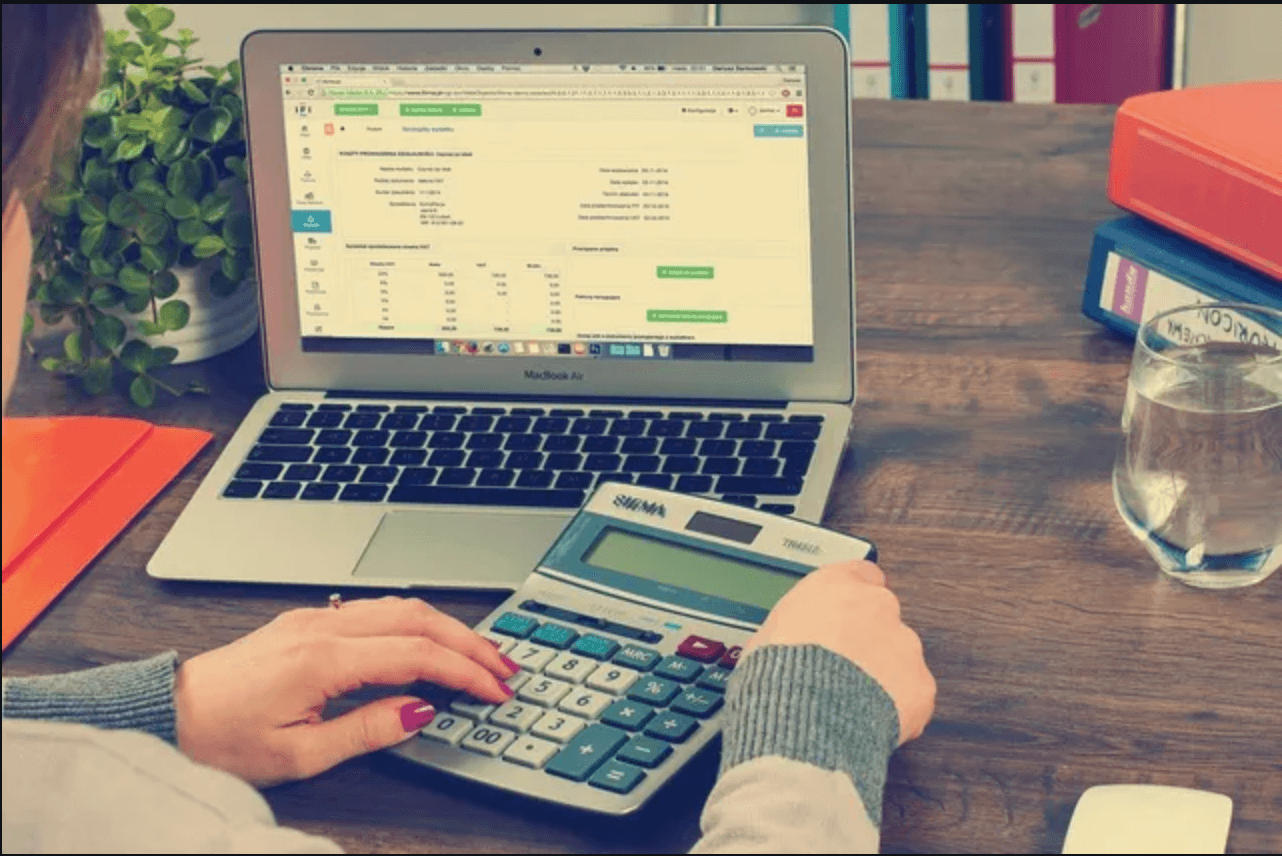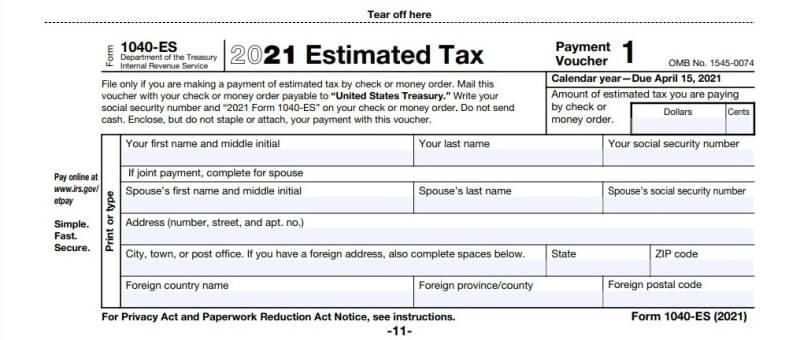If you are one of the people who get their income from self-employment, then you need to learn how to file quarterly taxes. For a beginner, this task may be daunting - but the process may be easily learned with time.
Quarterly taxes are often a better option than yearly taxes, as you pay estimated taxes throughout the year rather than one lump sum. Whether you are new to taxes or you want to brush up on your knowledge, this article will teach you how to approach quarterly estimated tax payments.
Note: If you want filing reminders and estimates for your quarterly tax payments, try Bonsai Tax. Our app will send you important deadline reminders and also scan your bank/credit card receipts to record all of your business expenses. Users typically save $5,600, on average, from their tax bill. Claim your 7-day free trial today.
The American tax system works on a pay-as-you-earn system. In other words, as you earn money throughout the year, you need to receive income for it. This way, the government will also receive a steady income.
For this reason, taxes are paid in two ways. W-2 employees will pay their taxes through withholding, whereas taxpayers that get their money through freelancing will pay through quarterly taxes.
If you are self-employed, there's no way to have your tax payments withheld from your paycheck. For this reason, the IRS requires that the individuals make these payments themselves, by their due date.
Quarterly tax payments are usually a better alternative to paying the taxes all in one lump sum. The IRS allows you to do that as well, but this might cause you to be overwhelmed by the larger sum. By paying quarterly, you pay in smaller increments, and the penalty will not be as big.
In most cases, freelancers are required to pay quarterly taxes. If you are the owner of a small business or owe a minimum amount of $1,000 in income tax, then you are expected to pay quarterly taxes.
In case you owe less than $1,000, then you will not be required to pay quarterly taxes. Instead, all you have to do is pay your due taxes as you are filing for a tax return.
Making less money does not make you exempt from taxes. It just changes the way you would normally make the payment.
Moreover, if you had no tax liability during the previous year, then you may also be exempt from paying quarterly taxes. This may be because you did not have to file for an income tax return, or because the "total tax" box on your Form 1040-ES stated $0.
To put it simply, as long as you are self-employed or you have your own business, you need to file for quarterly taxes, lest you'll receive a penalty. You are considered self-employed if you work in the following circumstances:
Side hustles might also be exempt from paying quarterly self-employment tax. All you need to do is ask the potential employee to withhold the necessary extra and file for you.
The same thing also applies in case you file jointly with your spouse and they have a W-2 job.

As a self-employed person, if you wish to avoid getting fined for underpayment of estimated taxes, then you'll want to file and pay by their due date. The tax year for 2021 is nearly over, but if you still want to know the dates, you may go by the following deadlines:
Depending on the circumstances, some self-employed individuals may skip the last quarterly tax payment in January, and pay what they expect to owe on the 1st of February, 2022.
The dates for the 2022 tax year are also out for taxpayers to keep in mind. People owing self-employment tax need to pay their quarterly tax by the following due dates:
Aside from the January date, every other deadline is the same. This makes them fairly easy to follow when making your estimated tax payment.

In order to pay your quarterly taxes, you first need to figure out exactly how much you owe. In many cases, the numbers will depend on the state along with the tax year that you are in. Because of this variety, the IRS often offers a tax calculator for you to use, or even calculates how much you owe.
With that in mind, if you plan to make those calculations yourself, you need to be thorough. Here are the steps you should take if you need to pay quarterly taxes:
Note: you can also determine how much taxes you'll owe at the end of the year by using Bonsai's online self-employed tax calculator. Just plug in your filing status, what State you are in, how much money you are planning to earn, etc and our tool will calculate everything for you.
Let's say that you are a self-employed individual who works as a freelancer, and expect to get an adjusted gross income of around $50,000. Taking out the business expenses that require no taxes, you estimate that the taxable income will be somewhere around $35,000.
At this point, you know how much you earn, but don't know how much you owe. For that, you need to consider the current tax rate. Considering this year's rate, as well as the example above, you'll owe somewhere around $4,000 in income taxes.
Bear in mind that the federal tax payment system not only taxes you for your annual income, but your status as well. You will have to pay a self-employment income tax (also referred to as the Social Security and Medicare Tax). This is somewhere around 15.3% of your total net income. Considering the example, you will have to pay $4,950 more.
By adding the self-employment tax and the income tax, you will get the total amount for the income taxes that you need to pay that year. In the example above, you'll get $8,950. Since you'll owe more than $1,000, you will have to make quarterly payments.
Bear in mind that the tax bill might change fairly often throughout the year. If your business grows and you begin making more money, you might want to make the adjustments. Otherwise, you will receive an underpayment penalty or be at risk for the tax liability.
Likewise, if you begin overpaying due to a decrease in income, you may also recalculate or ask for a tax refund.
You may also redirect the income taxes by following the form 1040 instructions.
You owe more than $1,000, which means that you'll need to pay quarterly rather than go for lump sums. This step is fairly easy, as all you have to do is to divide your annual tax amount by four. In this example, you'll need to pay estimated taxes of $2,238 every three months.
Now that you've determined exactly how much you'll have to pay, it is time that you send the taxes due to the IRS. . There are several ways in which self-employed people and small business owners may pay their taxes quarterly:
Online payments represent the most common option, as they allow taxpayers to complete the process from the comfort of their home. This may be done by going to the payment page of the IRS and using your debit or credit card to make the payment.
A business owner may also pay their annual tax by phone. This may be done by signing up for the Electronic Federal Tax Payment Services and using the voice option to pay your taxes quarterly by phone.
Since it's the era of technology and smartphones, you may also pay taxes using the IRS app. Simply download the IRS2Go app on your tablet or smartphone, and make the payment there.
A small business may also pay their taxes in the old-fashioned way, through checks or money orders. This is a good option if you have a local IRS office set up or if it's much easier for you to mail the expenses.
.jpeg)
Once you have calculated your quarterly tax payments as a self-employed individual, it is time that you make your due payments for estimated taxes. Here are the ways you may do that:
When you need to pay quarterly taxes, you may also do so through overpayment. For instance, when you are filing form 1040 or form 1040-ES, any overpayment may be directed to the adjusted gross income tax. It is often a better solution for many people as compared to receiving a tax refund on the money.

As a result, when you are calculating the estimated taxes for the current year, you may want to consider this amount as well.
If you are paying for the first time, you might want to use a tax calculator or employ the help of a financial advisor. In most cases, the IRS will also provide the help that you need and may even calculate the taxes for you.
That being said, if you are going to stay self-employed for a while, the chances are high that you will eventually learn to calculate those taxes yourself.
If you forget to pay your estimated taxes due or you pay quarterly taxes late, but owe more than $1,000 throughout the year, then you risk exposing yourself to tax liability from the IRS. However, there are instances when you may be exempt from paying a tax bill.
The circumstances in which you may be exempt from filing your quarterly include the following:
Regardless of the circumstances, you always need to be in contact with the IRS, whether you can make the payment or not. If you can't pay due to the reasons above, you still need to file your annual paperwork with the IRS along with the proof.
As a freelancer or an independent contractor, as long as you owe more than $1,000 in taxes per year, then you need to file for quarterly taxes. Ideally, you should keep track of your business expenses so that you know exactly what to expect every quarter. When in doubt, work with a tax advisor or directly with the IRS.